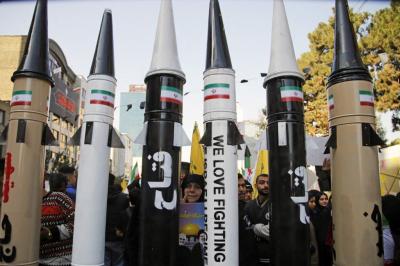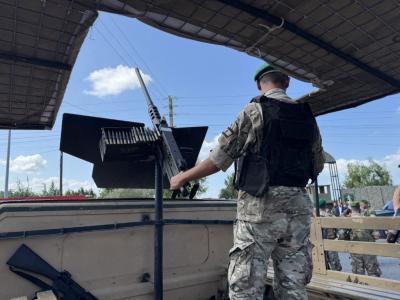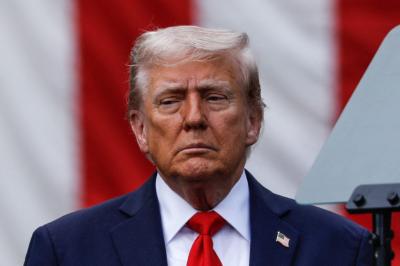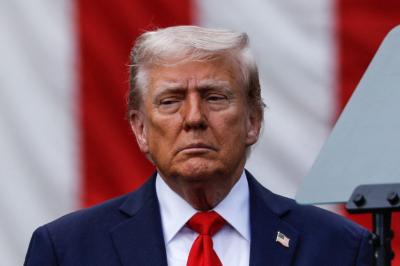The recent American-Russian summit held in Alaska mid-month and the subsequent summit at the White House hosting Ukrainian President Volodymyr Zelenskyy and European leaders are two significant milestones in the course of the Russian-Ukrainian war. Despite the high-level diplomacy and displays of cordiality, the two summits have produced more ambiguity, as the hoped-for peace remains a mirage.
Anchorage: A Showcase and Tactical Gains
The Alaska summit was steeped in symbolism and spectacle, sending clear signals of Putin's reintegration into international diplomacy after the isolation caused by his invasion of Ukraine in 2022. Putin considered this a victory, appearing as an equal to Trump despite ongoing accusations of war crimes and an arrest warrant issued against him by the International Criminal Court.
However, the summit failed to achieve a ceasefire or reach a concrete agreement. Trump's statements about "many points agreed upon" remained vague and were contradicted by Putin's insistence on addressing the "root causes" of the conflict. This expression is a metaphorical euphemism hiding his demand that Ukraine relinquish part of its territory and its Western orientation. Trump also abandoned his previous insistence on an immediate ceasefire, preferring to go directly to brokering a comprehensive peace deal. Practically, this shift lifted pressure from Russia and placed it on Ukraine to "strike a deal," despite the ongoing offensive operations of Russian forces in Donbas and Kherson.
The White House Summit: Unresolved Tensions
The Washington summit highlighted the divergence of priorities between Kyiv and its Western partners, and within Washington itself. European leaders emphasized the necessity of a ceasefire as a prerequisite for negotiations—a position supported by Zelenskyy, citing the heavy civilian losses Ukraine suffered last month, which reached 1,674 killed according to UN data. Nevertheless, Trump remained focused on organizing a meeting between Putin and Zelenskyy, arguing that a ceasefire would be fragile without a broader political settlement.
The discussions also included security guarantees for Ukraine but fell short of providing concrete commitments. European leaders affirmed that any peace agreement must include Ukraine's freedom to seek membership in NATO and the EU. The absence of a unified stance on sanctions against Russia or on supplying weapons to Ukraine highlighted the persistent disagreements across the Atlantic. Trump prefers bilateral moves over multilateral coordination.
Four Conflicting Conditions for Peace
Territorial Concessions vs. Sovereignty: Putin's demands—recognition of Russian control over the Crimean peninsula, Donetsk, Luhansk, Zaporizhzhia, and Kherson—remain unacceptable to Ukraine. Any deal imposing territorial concessions would legitimize the invasion and undermine the international order.
Security Guarantees: While Ukraine seeks protection like that provided by NATO, Russia rejects this. The US and Europe have yet to define a reliable alternative to NATO membership, and Russia's history of violating agreements raises doubts about its compliance.
Direct Dialogue: A Putin-Zelenskyy meeting, proposed by Trump as a next step, poses significant risks for Kyiv. Without preconditions, it could become a platform for Russian propaganda or coercion.
Western Ally Unity: Continued differences between Washington and its European allies, and Trump's preference for unilateral action due to his skepticism of NATO, contrast with the EU's focus on multilateralism and pressure through sanctions. This lack of cohesion encourages Putin to exploit divisions.
The Cost of Diplomatic Failure
The failure of these two summits to stimulate a credible peace process will lead to consequences extending beyond Ukraine:
- A Protracted Humanitarian Crisis: Civilian casualties have reached their highest level since May 2022 due to Russian long-range drone and missile attacks. Continued attacks mean more casualties and destruction of infrastructure.
- European Security Instability: The conflict drains military resources and fuels political divisions within NATO. Countries like Poland and the Baltic states face increasing risks from Russia's expansionist ambitions.
- Global Geopolitical Shifts: Putin's reintegration encourages other "revisionist" powers, particularly China and North Korea, which are watching for weaknesses in Western resolve.
- Erosion of US Credibility: The ambiguity of Trump's stance on Putin and Russia, and his vacillation, undermines confidence in American leadership.
- Nuclear Risks: Russia's withdrawal from the Intermediate-Range Nuclear Forces (INF) Treaty and its testing of missiles capable of carrying nuclear weapons point to the potential for escalation.
The Middle East: An Interconnected Conflict
The wars in Ukraine and Gaza reveal a pattern of 21st-century "imperialism" and a re-evaluation of geopolitical norms. Both involve regional proxy conflicts and severe humanitarian crises. The Trump administration's simultaneous engagement in both wars indicates a strategy to isolate Iran by weakening its allies, such as “Hezbollah” in Lebanon, and to separate Moscow from Tehran through diplomatic initiatives.
The American focus on Gaza has diverted attention and resources away from Ukraine, while Russia has benefited from its alliance with Iran, receiving drones and missiles to continue its campaign in Ukraine. Weakening Iran's proxies in the Middle East may create temporary gains for Israel, but it does little to address the Palestinian issue or regional stability.
Solution or Mirage?
The Anchorage and Washington summits have not yet achieved a clear breakthrough; instead, they have revealed a mismatch of goals: Russia seeks victory through diplomacy or force, Ukraine fights for survival, and the West tries to overcome internal disagreement to provide support.
Simultaneously, the map of the Middle East is being reshaped by the power maneuvers surrounding Ukraine. The United States is attempting to exert pressure and diplomacy in both theaters at once. However, the ongoing violence, the fragility of any ceasefire, and competing strategic interests mean that stable peace remains elusive.
Yet, logic suggests a solution is inevitable:
- Russia is no longer comfortable. Its human and material losses are significant, and its economy is strained.
- Ukraine is unable to continue without Western support and cannot compensate for its military losses.
- Europe cannot continue bleeding its economic, financial, and military resources without a clear horizon.
- The United States is pursuing strategic goals larger than Ukraine, and the continuation of the war hinders its achievement.
Please post your comments on:
[email protected]
 Politics
Politics














